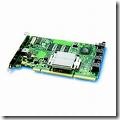
Intel RAID Controller Troubleshooting Guide: My RAID controller has an issue not addressed above
Check the following:

• Update the firmware files to the latest version. The files required depend of the server
board, but may include BIOS, BMC, FRUSDR, HSC. Clear the CMOS upon completing
any updates. Update the RAID controller to the latest version of firmware. Update files
can be downloaded from http://support.intel.com/support/motherboards/server.
• Download and apply the latest drivers used for your installation. These drivers may
include video, network adapter, SCSI, ATA RAID, chipset, and operating system drivers.
• Confirm that the processor(s) was installed correctly. If a single processor is installed, it
must be in CPU socket 1. When more than one processor is installed, they must be of
the same speed and voltage (and within one stepping). Do not attempt to overclock the
processors or other components on this system. Overclocking is generally not possible
and may damage components and void the warranty of your server board or other
components.
• Confirm that the memory is properly seated and that both the server board and RAID
controller memory is listed on the tested memory list.
• Calculate the power budget to ensure sufficient power is supplied. Power budget
information is usually included in the server board product guide or the technical product
specification. Information about the RAID controller power-draw is available in the RAID
controller hardware guide and is also available at
http://support.intel.com/support/motherboards/server.
• Verify that all chassis, power supply, and processor fans are properly installed and
functioning. If installed in a third-party chassis, verify that sufficient cooling is available.
• When using multiple PCI adapter cards in a PCI riser with more than one slot, populate
the slots from the bottom up. On systems without a PCI riser, see if your results vary by
moving the RAID controller to a different slot.
